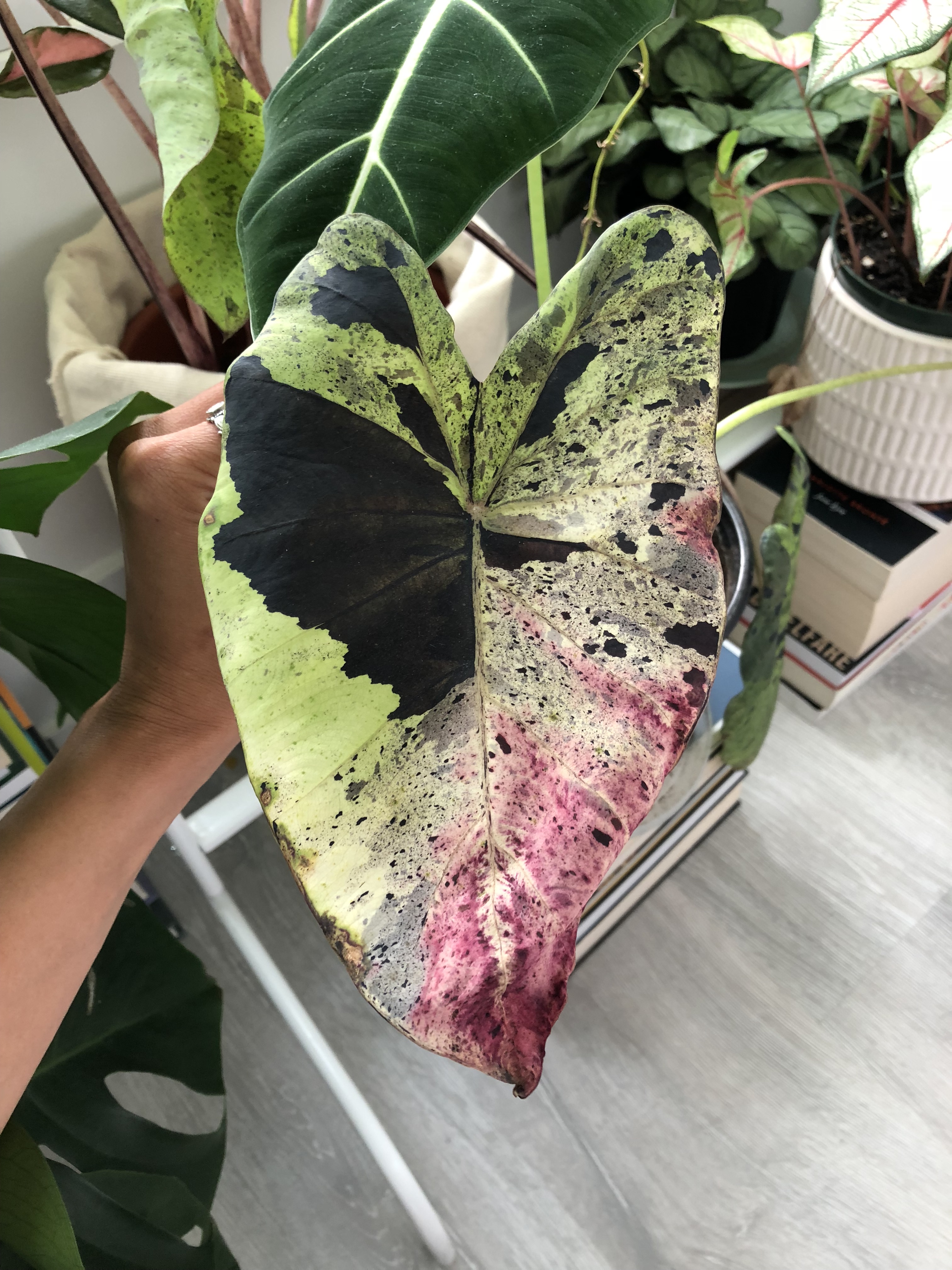colocasia esculenta ‘mojito,’ aka elephant’s ear or taro, is an edible plant that is a natural mutation of the ‘midnight’ cultivar (strode, 2007). it reminds me of my childhood as we ate quite a bit of taro at home. the foliage on mojito is one of my faves – the variegation looks like it’s been painted on 😻😻 i also love the life cycle of mojito leaves. i’ve included photos at the end of this post. you can also see progress of mojito on ig at #jmcolocasiamojito

history
colocasia esculenta is native to tropical asia, originating in southeast or southern central asia. it is believed that this plant has been in cultivation for over 10,000 years – before the domestication of rice. archaeological evidence suggests that humans used colocasia plants 28,000 years ago in the solomon islands (loy et al., 1992). it was then spread by human settlers to new guinea & the pacific over 2,000 years ago. distribution to china and to egypt & east africa also occurred at least 2,000 years ago. from there it was introduced to west africa & then into europe from egypt (greenwell, 1947). colocasia was one of the first crops introduced to hawai’i by polynesians around 900 to 1,000 ad (cho et al., 2007). the plant is an important cultural symbol in hawai’i where it is used for food & also tied to beliefs about creation (cho et al., 2007).
did you know?
as if being edible wasn’t cool enough, research has shown that colocasia esculenta can be used for the treatment of sewage water through a process called phytoremediation (e.g., bindu et al., 2007; chavan & dhulap, 2013). it’s incredible that native plants can be employed to clean toxins via their naturally occurring processes. all i could think of as i read these articles: nature doesn’t need people, people need nature ✌🏼
during the 17th century, colocasia was brought from africa to the americas as food for slaves by the spanish, portuguese, & british (greenwell, 1947). taro was cultivated as early as 1647 in barbados for this purpose (carney & rosomoff, 2009). also, fuck colonialism & genocide!
care tips
- these plants love warmth and humidity!
- bright, indirect light from an east-facing window
- i placed mine on the balcony over summer where he enjoyed direct am sun
- keep the potting medium moist at all times
- they have adapted to grow in a broad variety of substrates & a broad range of habitats from full sun to deep, shaded areas (safo-kantaka, 2004)
- colocasia plants have the ability to reproduce via seeds & by corms, tubers, & root suckers
- during winter, colocasia plants may go dormant. in this case, corms can remain in the pot. the corms will sprout & new plants will come the following spring.
- it is normal for the leaves to die off, don’t be alarmed & enjoy the process of the colours changing – i love it because it reminds me of impermanence & that there’s beauty in letting go.

at the beginning 
at the end
